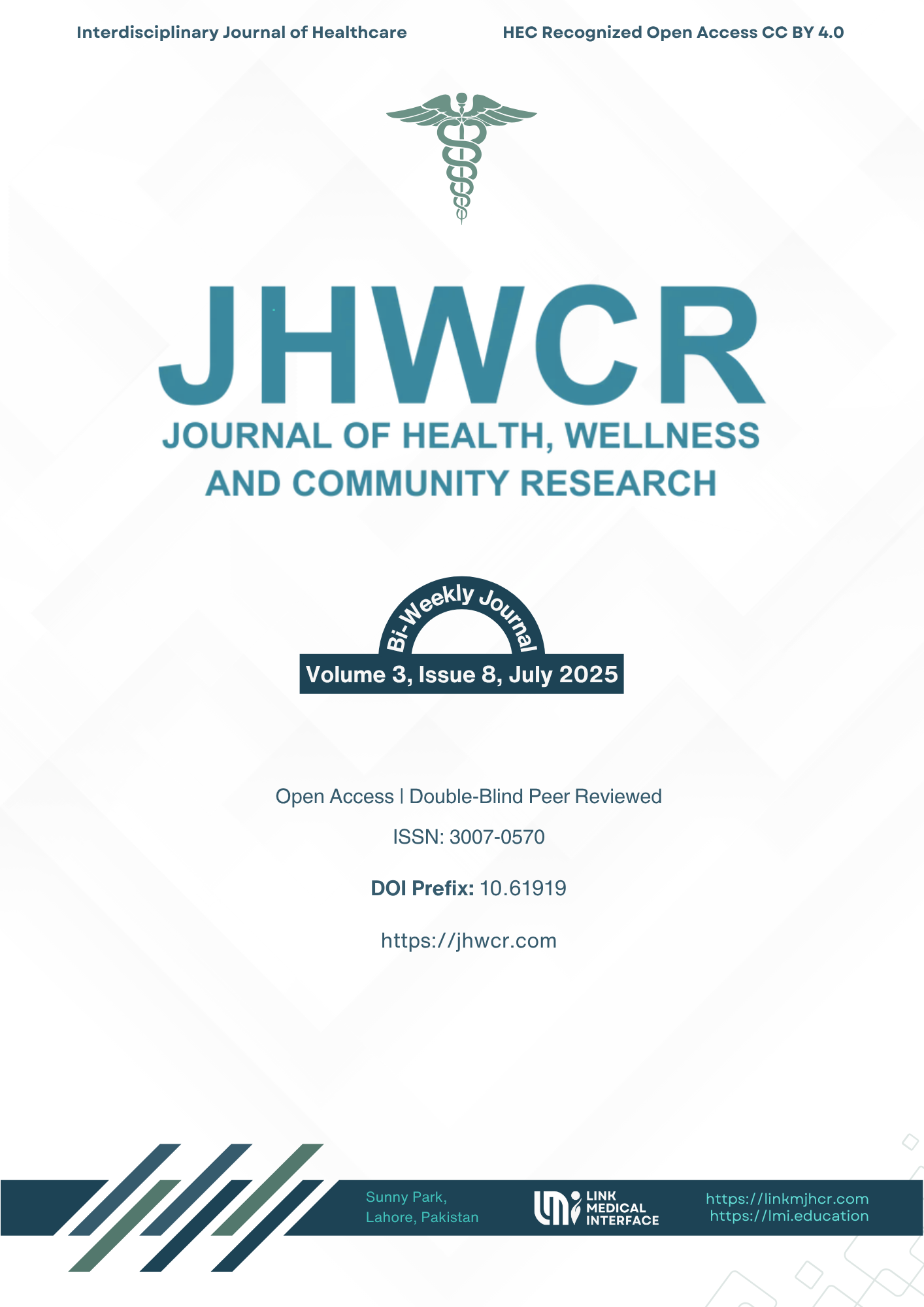Prevalence and Determinants of Severe Acute Malnutrition Among Children of Age 6-59 Months Presenting to Pediatrics Department Holy Family Hospital Rawalpindi
DOI:
https://doi.org/10.61919/24vwvh40Keywords:
Severe Acute Malnutrition, Pediatrics, Prevalence, Risk Factors, Pakistan, Anthropometry, Public HealthAbstract
Background: Severe acute malnutrition (SAM) remains a leading cause of childhood morbidity and mortality in developing countries, with Pakistan experiencing persistently high rates despite ongoing public health interventions. Identifying the prevalence and determinants of SAM in local clinical settings is critical for designing effective prevention and treatment strategies. Objective: To determine the prevalence of severe acute malnutrition among children aged 6–59 months presenting with malnutrition to the Pediatrics Department of Holy Family Hospital, Rawalpindi, and to assess demographic, maternal, and socioeconomic factors associated with SAM. Methods: This cross-sectional observational study included 270 children aged 6–59 months recruited consecutively from Oct 6 2024 to April 5 2025 Anthropometric measurements were obtained following World Health Organization protocols, and relevant clinical and sociodemographic data were recorded using a structured proforma. Severe acute malnutrition was defined as a weight-for-height Z-score below −3 or the presence of nutritional edema. Data were analyzed using SPSS v25, with chi-square tests and odds ratios calculated for associations, and significance set at p < 0.05. Results: The prevalence of severe acute malnutrition was 43.3%. No statistically significant associations were observed between SAM and gender, age group, maternal BMI, socioeconomic status, or exclusive breastfeeding. Trends suggested higher SAM risk in children aged 13–35 months and among those with suboptimal feeding practices, though these did not reach statistical significance. Conclusion: Severe acute malnutrition remains highly prevalent in this population, with no single demographic or maternal factor demonstrating a significant association. Comprehensive, multi-pronged public health interventions targeting early childhood remain essential to reduce the burden of SAM.
Downloads
Published
Issue
Section
License
Copyright (c) 2025 Huma Ahmed, Israr Liaqat, Naghmana Ifikhar, Hafiza Tarum Naveed (Author)

This work is licensed under a Creative Commons Attribution 4.0 International License.


